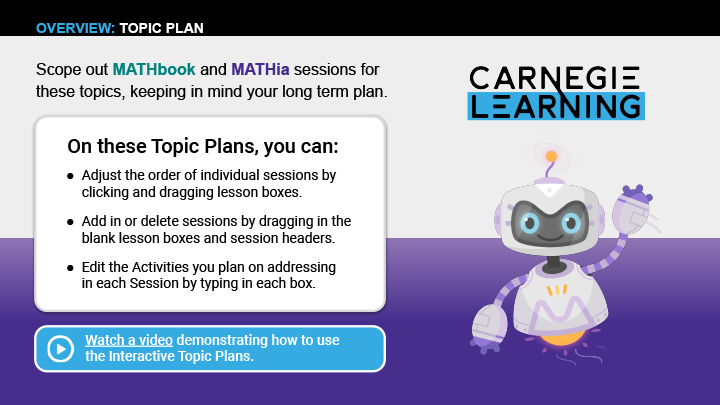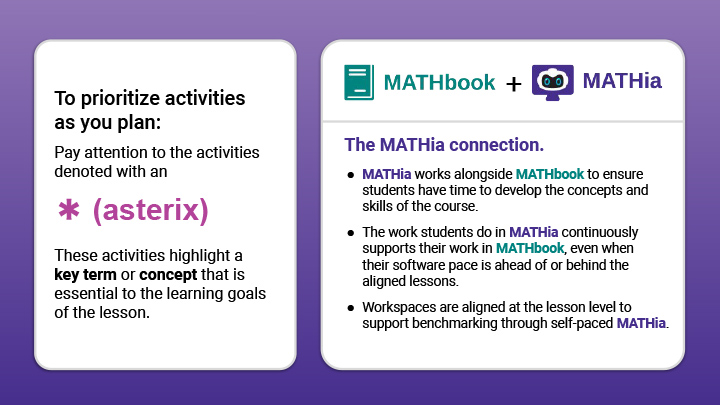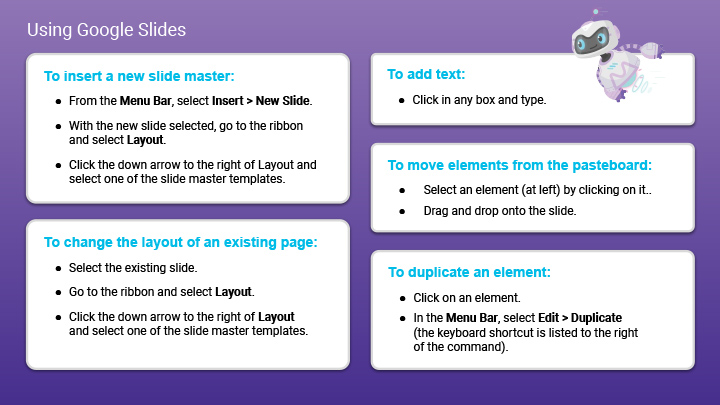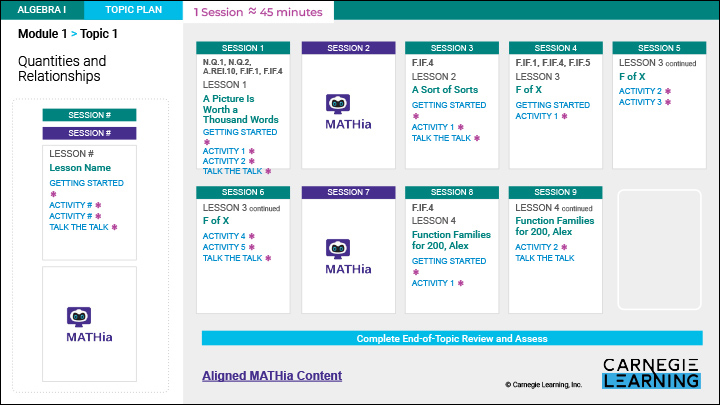Can design rescue a struggling product?
The Challenge:
Carnegie Learning Middle and High School Math Solution received one of the highest rankings from EdReports, but sales were underwhelming. Although the content had received accolades, the visual presentation was off-putting to teachers and administrators. Customer feedback indicated the product was ‘scary’ and ‘not attractive’.
The Product Development team hired me to rethink their student and teacher materials with the goal of making the curriculum more accessible and engaging. Specifically, they wanted me to “challenge their assumptions and biases” as we evolved the existing content into a functional and beautiful design system.
My Solution:
I resolved all customer pain points identified in user research by redirecting the flow of the information in a way that was easy to navigate, made sense, and was consistent with the brand. Improvements included:
- establishing clear information architecture
- reorganizing existing content to reduce frustration
- adding clear instructional labels and directional design elements
- defining visual building blocks and assets that were put in use across the entire product ecosystem
- creating an intentional connection between print, adaptive software, and assessments
- redesigning the Front Matter to leverage the Carnegie Learning brand
- reducing overall page count by 15%
Not only was the client thrilled with the results, the middle school curriculum earned a perfect score from EdReports.org.
After a thorough review and analysis of the existing product, I redesigned the content to include:
- enhanced navigation
- a consistent design system for repeating content elements
- an intentional connection between textbook and software
- mathematical concepts identified at point-of-use
- increased white space for student practice
- consistent styles and symbols for math typesetting
- specifications for technical art
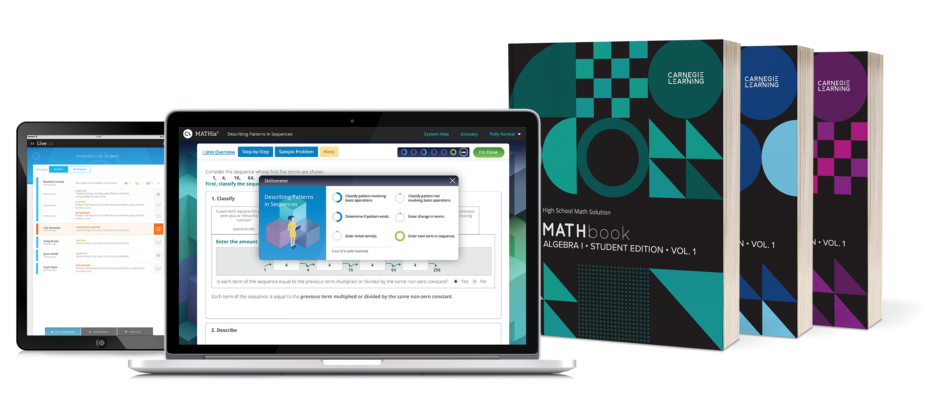
User Journey
To better understand the instructional routine and the teacher experience, I found it useful to map the user journey in FigJam. This helped me to follow the sequence and pacing of instruction as I put myself in the shoes of both the teacher and the student.
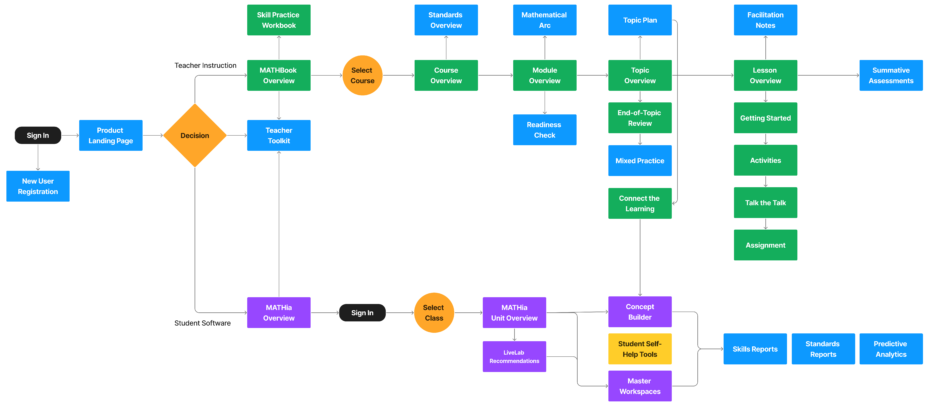
Front Matter
The Carnegie Learning Story
Teachers (and potential customers) are introduced to MATHBook via the front matter of the Teacher Implementation Guide. I redesigned the pages to:
- clearly explain the approach, pedagogy, and content elements found in the book
- emphasize the blended model of learning, making an intentional connection between textbook (MATHBook) and software (MATHia)
- highlight what differentiates Carnegie Learning from a crowded and primarily “traditional” market
- create excitement during the sales process
- immediately make teachers feel comfortable
Teacher Implementation Guide
Lesson Planning
A resource for planning, guiding, and facilitating student learning, these pages provide learning goals and review questions and connect the lesson to prior knowledge.
I incorporated the instructional model (Engage + Develop + Teach) into the page header as a navigation tool that helps teachers understand the intent of each section and provides them with everything they need at point-of-use.
- Engage: Read the Module Overview to appreciate the arc of the math
- Develop: Read the Topic Overview and do the math to experience the content development
- Teach: Read the Facilitation Notes and plan learning experiences to meet classroom goals

Also included are aligned standards, guiding questions that help teachers differentiate instruction, and point-of-use support that simplifies planning, understanding, and teaching student-centered lessons.
Teacher Implementation Guide
Lesson Overview
Instructional pages are designed to walk the teacher through each math lesson and provide point-of-use facilitation tools.
Expert tips are featured for engaging with students and guiding their mathematical development. Specific instructional strategies are explained for each activity type.
By understanding the instructional sequence, teachers have the flexibility to plan out pedagogical moves in a way that works for their specific classroom.
Teacher Implementation Guide
Facilitation Notes
Clearly organized facilitation notes were designed to fully assist the planning process for each lesson.
To help teachers (and pupils in the corresponding student book) track their progress, I incorporated a lesson tracker into the header of each instructional page. Icons guide users through the lesson while trackers show progress.

The content in the facilitation notes corresponds with the lesson structure, providing differentiation strategies and common student misconceptions to support all students at all learning levels as well as suggestions for extending activities.
Online Planning
Topic Planner
To assist teachers with scoping and planning, I created interactive, drag and drop planners in both Google slides and Powerpoint formats.
Teachers are able to add, delete, re-order, and customize sessions as they plan instruction. Links are included to aligned content in the software and training videos.
Math
Tech Art
Visual representations (VRs) are used in mathematics to help students solve problems and understand abstract ideas.
I identified the math representations required for each subject area, designed a consistent visual language for each representation, and created specifications for the illustrators who would be creating the technical art.
MATHBook
Student Edition
MATHBook is the student’s primary classroom resource recording each student’s thinking, reasoning, and problem-solving.
Each lesson interweaves instruction, questions, and worked examples to engage students as they develop their mathematical understanding.
The assignment at the end of each lesson provides opportunities for students to practice and apply their knowledge of mathematics learned.
Students learn new math concepts by collaborating, creating, communicating, and problem-solving together with their peers.
